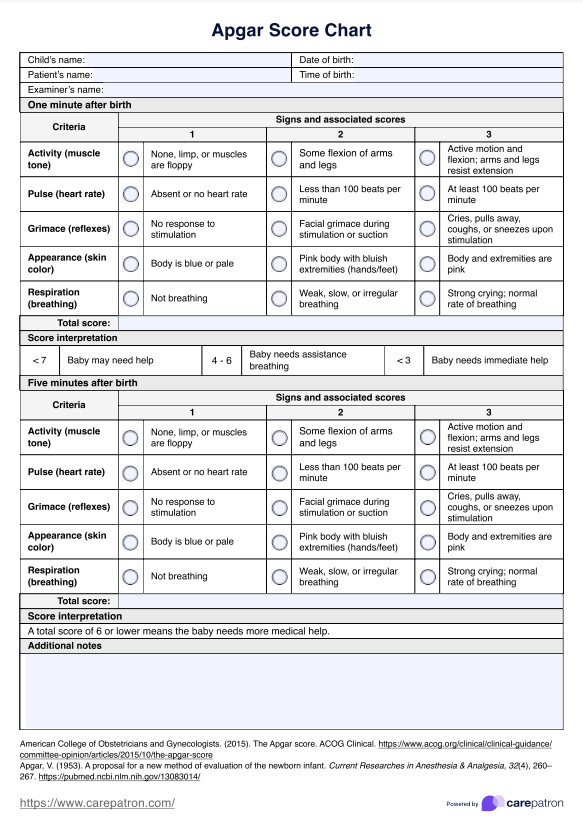A healthy Apgar score ranges from 7 to 10, indicating that the newborn is in good health and does not require immediate medical intervention. If a baby's Apgar score is in this range, it suggests that the infant is stable in terms of heart rate, muscle tone, reflexes, skin color, and respiratory effort, which are critical indicators of neonatal well-being.

Apgar Score Chart
Use our Apgar Score Chart template to assess newborn infants. Our guide will show you how to score it, interpret results, and more.
Apgar Score Chart Template
Commonly asked questions
An Apgar score of 0 to 3 is considered an emergency, signaling a critical condition that requires immediate resuscitative efforts. If a baby's Apgar scores are low, it indicates severe distress in the newborn, often necessitating interventions such as oxygen support or other medical assistance to stabilize the infant.
The 5 Apgar scores correspond to the following criteria: Appearance (skin color), Pulse (heart rate), Grimace (reflex irritability), Activity (muscle tone), and Respiration (breathing effort).
EHR and practice management software
Get started for free
*No credit card required
Free
$0/usd
Unlimited clients
Telehealth
1GB of storage
Client portal text
Automated billing and online payments











